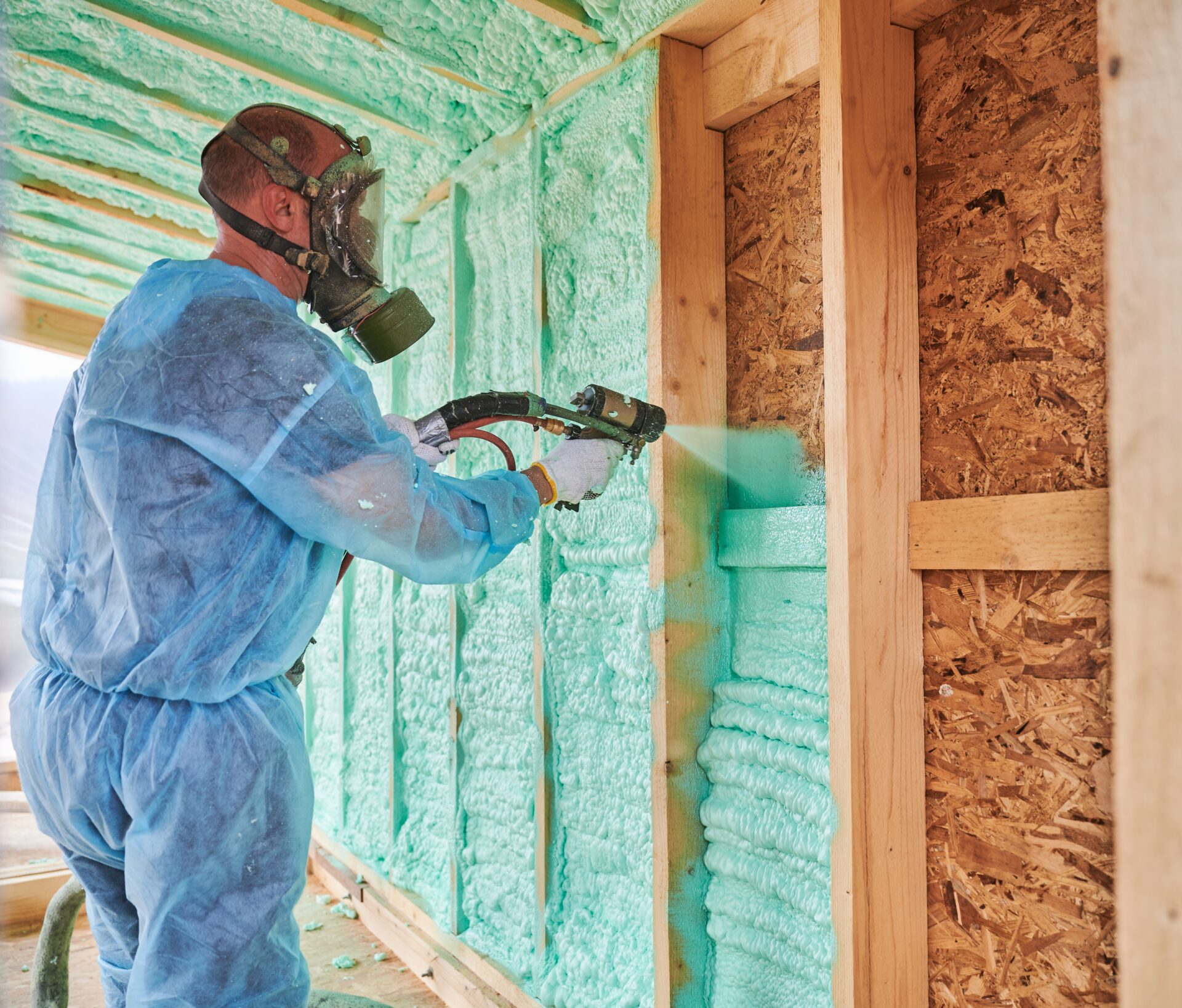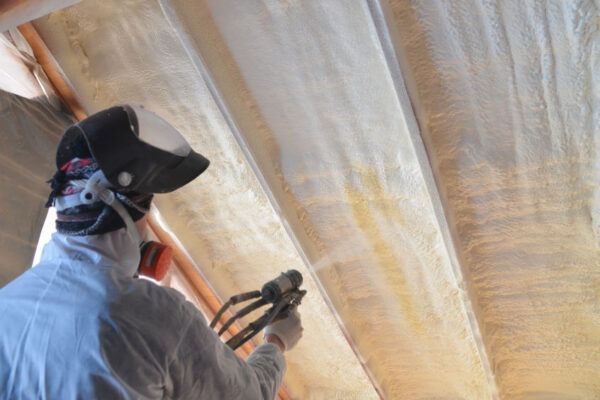The Process of Applying Spray Foam: What You Need to Know
The Process of Applying Spray Foam: What You Need to Know
Blog Article
Just How Spray Foam Can Enhance Energy Performance in Any Type Of Structure
Spray foam insulation has actually emerged as a crucial solution for enhancing energy performance throughout numerous structure kinds. By creating a closed seal that lessens air leak, it properly manages interior climates while considerably minimizing heating & cooling costs. Moreover, its remarkable R-value and moisture-resistant residential properties add to long-term power cost savings and improved structure longevity. As home proprietors increasingly look for sustainable remedies, the implications of spray foam insulation expand past plain utility financial savings. The full extent of its advantages, however, warrants a better exam of just how it can change energy administration approaches in both commercial and domestic setups.
Comprehending Spray Foam Insulation
Spray foam insulation is increasingly identified for its remarkable thermal efficiency and convenience in numerous applications. Composed mainly of polyurethane, this insulation material is applied as a liquid that broadens upon contact, loading voids and developing a seamless barrier. This distinct property allows spray foam to conform to irregular surface areas, making it an excellent choice for both property and commercial structures.

Application of spray foam insulation is usually done by trained experts using customized tools, making certain optimal efficiency and safety and security - Spray Foam. The healing procedure is quick, enabling quick installment and minimal disruption. Therefore, spray foam insulation is significantly being used in new construction and retrofitting projects because of its capability to improve structural honesty while enhancing overall power effectiveness in structures
Benefits of Energy Effectiveness
Energy efficiency plays a pivotal role in lowering operational prices and lessening ecological effect across different markets. By optimizing power usage, companies and homeowners can attain substantial savings on energy bills, which straight enhances economic efficiency. Reliable power consumption means much less reliance on nonrenewable fuel sources, thus adding to a decrease in greenhouse gas emissions and advertising an extra sustainable atmosphere.
In addition, energy-efficient buildings commonly experience increased building values. As energy expenses climb and sustainability becomes a concern for customers, buildings with enhanced energy effectiveness attributes are more attractive on the market. This pattern urges investment in energy-saving innovations, which can additionally drive innovation and economic growth.
In addition to economic and ecological advantages, power efficiency can likewise enhance the general comfort and health of indoor spaces. Proper insulation and efficient cooling and heating systems aid keep regular temperature levels, minimizing drafts and moisture levels, which consequently can result in better indoor air quality.
Inevitably, the advantages of energy effectiveness extend beyond immediate savings, cultivating a resistant economic situation, advertising ecological stewardship, and improving the lifestyle for passengers in any type of building.
How Spray Foam Works
Normally used as a fluid, spray foam expands rapidly upon contact with surfaces, creating a solid barrier that effectively seals fractures and voids. This special residential property is due to its chemical structure, mostly containing isocyanates and polyols, which respond when mixed to produce a foam that sticks and fills spaces to various materials, consisting of steel, wood, and concrete.
Once applied, the foam expands to numerous times its original volume, making certain a tight seal that protects against air leakage. This procedure considerably lowers thermal connecting, which takes place when warm transfers via materials, bring about energy loss. The foam's high R-value, a procedure of thermal resistance, adds to enhanced insulation by minimizing warm transfer between the inside and exterior settings.
Additionally, spray foam is resistant to wetness and bugs, better enhancing its effectiveness in preserving power performance. Its application can be tailored to different areas, consisting of attic rooms, wall surfaces, and crawl spaces, optimizing insulation throughout a structure. Spray Foam. On the whole, the cutting-edge design and application method of spray foam make it an efficient service for enhancing energy effectiveness in any type of framework, bring about minimized energy prices and a much more lasting constructed environment

Applications in Different Structures
Many applications of spray foam insulation can be found across numerous building kinds, enhancing energy performance and comfort. In household homes, spray foam is typically made use of in walls and attics to develop a smooth barrier versus air leakages, considerably lowering home heating and cooling demands. This application is specifically useful in older homes, where typical insulation may be insufficient.
In business buildings, spray foam insulation is put on roofing systems and outside wall surfaces, which assists to boost thermal performance and safeguard against moisture invasion. Its light-weight nature makes it an optimal selection for retrofitting existing structures without including substantial weight. Furthermore, spray foam can be made use of in industrial settings to protect pipelines and storage tanks, keeping temperature control for delicate products.
Institutional structures, such as medical facilities and schools, take advantage of spray foam insulation by ensuring a regular indoor climate that sustains resident comfort and wellness. The versatility of spray foam allows it to adapt to try these out different structure forms this contact form and sizes, making it a favored choice for architects and home builders seeking effective insulation services. In general, spray foam insulation serves as an essential part in accomplishing energy-efficient structures throughout all fields.
Long-Term Cost Cost Savings
Spray foam insulation supplies significant lasting cost savings for building proprietors and owners by minimizing power consumption and reducing utility bills. By providing a superior air seal, spray foam minimizes the seepage of outside air, thus enhancing the thermal performance of a building. This results in more effective home heating and cooling processes, which can lead to significant reductions in power expenses gradually.
Along with instant savings on energy bills, the durability and longevity of spray foam insulation add to its financial benefits. Unlike traditional insulation materials, which might sag, work out, or wear away, spray foam preserves its performance for decades, minimizing the demand for regular substitutes or fixings. This long life equates to lower upkeep expenses and less interruption for passengers.
Additionally, buildings geared up with spray foam insulation typically take pleasure in a boost in residential property worth, making them more attractive to potential purchasers or lessees. As energy efficiency comes to be progressively prioritized, homes with reliable insulation options attract attention in the market. Ultimately, the integration of spray foam insulation not only improves convenience but additionally stands for a tactical financial investment that produces considerable financial benefits over the lengthy term.
Verdict
Finally, spray foam insulation works as an essential part in boosting power efficiency across diverse building kinds. Its capability to create a seamless barrier against air leak, incorporated with moisture-resistant properties and try here high r-values, considerably reduces power intake and connected expenses. The execution of spray foam not just adds to regular indoor temperature levels yet likewise raises home worth, highlighting its function as a sensible investment for both industrial and household residential properties.
Spray foam insulation has emerged as a crucial option for improving power effectiveness throughout different structure types. Spray Foam. As an outcome, spray foam insulation is progressively being employed in brand-new construction and retrofitting jobs due to its ability to improve architectural stability while boosting overall energy performance in buildings
Overall, the cutting-edge design and application approach of spray foam make it an effective option for boosting power efficiency in any type of framework, leading to reduced energy expenses and an extra sustainable developed setting.
Countless applications of spray foam insulation can be found across different structure kinds, enhancing energy effectiveness and convenience.In verdict, spray foam insulation offers as an important element in boosting power performance across diverse building types.
Report this page